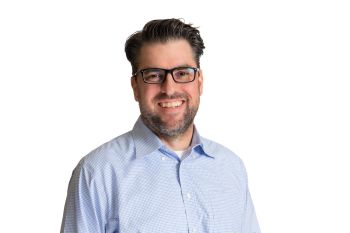Business Professor Puts His Brand on Product Placement Research

Thirty years ago, a character in a movie ordered a pizza. When he heard that the pizza company had paid to have its name mentioned in the movie, advertising professor Siva Balasubramanian was intrigued and set out to learn more about what was then an emerging type of advertising—product placement.
Since then, Balasubramanian, who is now the Harold L. Stuart Endowed Chair in Business at Illinois Institute of Technology, has made product placement a major focus of his research, teaming up with colleagues around the world to examine the effectiveness of brand placement and to conduct groundbreaking cross-cultural studies of attitudes toward product placement.
Balasubramanian was recognized this spring in an article in the Journal of Advertising, a top-tier academic research journal, as one of a select group of scholars who “are both prolific and highly cited authors.” The article places him among the half-dozen “most influential researchers” in the field and notes that he was the first scholar to define the concept of product placement.
The article’s discussion of important publications reflects Balasubramanian’s theoretical contributions, such as a model showing how product placements can influence viewers’ brand responses, and his significant work exploring cross-national differences in attitudes and perceptions about product placements.
“The U.S. has always been a leader in product placement because of Hollywood,” says Balasubramanian. “Americans actually prefer that it’s used [because] it is more realistic. It would not look real if someone in a movie opened a can just labeled ‘Beer.’”
Certainly not everyone shares that favorable view of product placement, according to studies that Balasubramanian and his colleagues have conducted. They have found considerable differences from country to country in people’s attitudes toward product placement and in government regulations regarding the practice, with European countries generally taking a more critical approach.
“Europe has become a hotbed of product placement research, and I’m working with some of the best people there,” says Balasubramanian. In recent summers he has traveled to Italy, the Netherlands, and Spain to give presentations and participate in symposia at business schools and universities, and has been invited back this year.
Over time he has also developed a network of scholars from Italy, Finland, Slovenia, Saudi Arabia, and Turkey who are collaborating on a variety of projects, most of them focused on cross-cultural research in product placement.
“I can’t tell you enough about how energetic our group is,” he says. “They bring a lot of fresh ideas to this work.” The pace of their research is ramping up, he notes, as the group is gathering data, formulating research questions, applying sophisticated modeling techniques, and then quickly writing papers and submitting them to journals.
In addition to his continuing cross-cultural research, Balasubramanian has projects on his plate this summer that branch into other areas of product placement. He is continuing his collaboration with Illinois Tech Associate Professor of Finance Haizhi Wang that is looking into financial returns from product placements. New projects include a survey of brand marketing managers at major companies in the U.S. to examine their perspectives and decision making on product placements, as well as an initiative to gauge consumers’ attitudes toward product placements in social media.
He is also embarking on several projects with a colleague in Spain aimed at gaining insights into product placement in novels by embedding product placements in editable versions of books and observing the effects on readers of using different types of brands and embedding treatments.
“We want to expand beyond movies and TV to see how products get placed in novels, music, and other areas,” says Balasubramanian, “and to use that research design in our work.”




